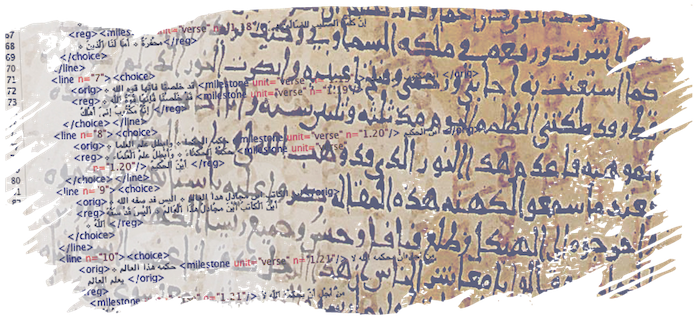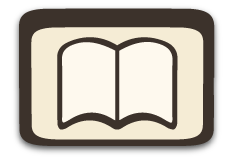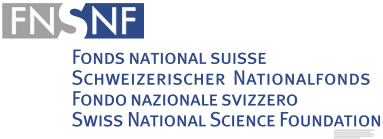 Digital Edition of an Ancient New Testament Arabic Manuscript
by Vital-DH projects@Vital-IT
Digital Edition of an Ancient New Testament Arabic Manuscript
by Vital-DH projects@Vital-IT
Tarsian offers
Images
High quality
Edition
Different layers of the text
Tools
User-friendly interface and more
About the edition
Tarsian is a work in progress; folios and features will be added progressively.
The edition proposes:
- the display of the images in high-quality (300 dpi).
- two versions (“layers”) of the Arabic text: diplomatic and standardized/vocalized.
- a French translation (English forthcoming).
The encoded text is available on github.
To find more about the development of the project
- Claire Clivaz, Sara Schulthess, Martial Sankar, “Editing New Testament Arabic Manuscripts on a TEI-base: fostering close reading in Digital Humanities”, submitted to a special JDMDH number on Computer-Aided Processing of Intertextuality in Ancient Languages, ed. M. Büchler, L. Mellerin, 2016, url.
How to use the edition:
In the upper-right corner, you can choose to display image and text  , text only
, text only  or image only
or image only  .
.
In the scroll-down menu, you can select the folio you are interested in.
In a modus with text, you can choose to display the diplomatic version of the text (“diplomatic”), the standardized version with vocalization ("interpretative") or the translation. When you choose one of the Arabic text, the other will appear when you run your cursor over the lines.
Please note:
- Green box = addition of text by a scribe above the line, below the line or in the margin.
- Blue box = illegible; the text is our suggestion.
- Yellow box = word (or letters) is repeated twice.
- If the punctuation ܀ (U+0700) is not displayed correctly, it is maybe because your computer lacks a Syriac font. You can download a Syriac Font package here.
About the manuscript
Vaticanus Arabicus 13 is an Arabic manuscript of 179 folios containing parts of the Gospels and the fourteen letters of Paul. The manuscript is dated to the 9th century and the colophon on the last folio mentions the city of Ḥoms.
Images of the complete manuscript are available here.
Here a selective bibliography:
- Sara Schulthess, Les manuscrits arabes des lettres de Paul. La reprise d’un champ de recherche négligé, thèse de doctorat de l’Université de Lausanne/Radboud Universiteit Nijmegen, 2016. link
- Hikmat Kashouh, The Arabic Versions of the Gospels, The Manuscripts and Their Families (Arbeiten Zur Neutestamentlichen Textforschung 42), Berlin, Boston: De Gruyter, 2012.
- Juan Pedro Monferrer-Sala, “An Early Fragmentary Christian Palestinian Rendition of the Gospels into Arabic from Mar Saba (MS Vat. Ar. 13, 9th C.),” Intellectual History of the Islamicate World 1 (2013): 69–113.
- Juan Pedro Monferrer-Sala, “The Pauline Epistle to Philemon from Codex Vatican Arabic 13 (Ninth Century CE) Transcription and Study,” Journal of Semitic Studies 60, no. 2 (2015): 341–71.
About the project
The digital edition Tarsian is a development of the project The Arabic Manuscripts of the Letters of Paul of Tarsus. Come back to a neglected field, a Swiss National Science Fondation project under the direction of Claire Clivaz (2013-2016). It was created in collaboration with Vital-IT, Swiss Institute of Bioinformatics. This collaboration is under the label Vital-DH projects@Vital-IT.
You can discover more about the project on the Arabic Manuscipts of the Letters of Paul on the research blog and in the SNF database.
Tarsian is developed by Sara Schulthess and Martial Sankar.
Credits
The folios are reproduced by permission of Biblioteca Vaticana Apostolica, with all rights reserved; no copy allowed.
The Arabic text and translation are in CC BY 4.0 (github).
Open source editorial tool developed by Vercelli Book Digitale project.

